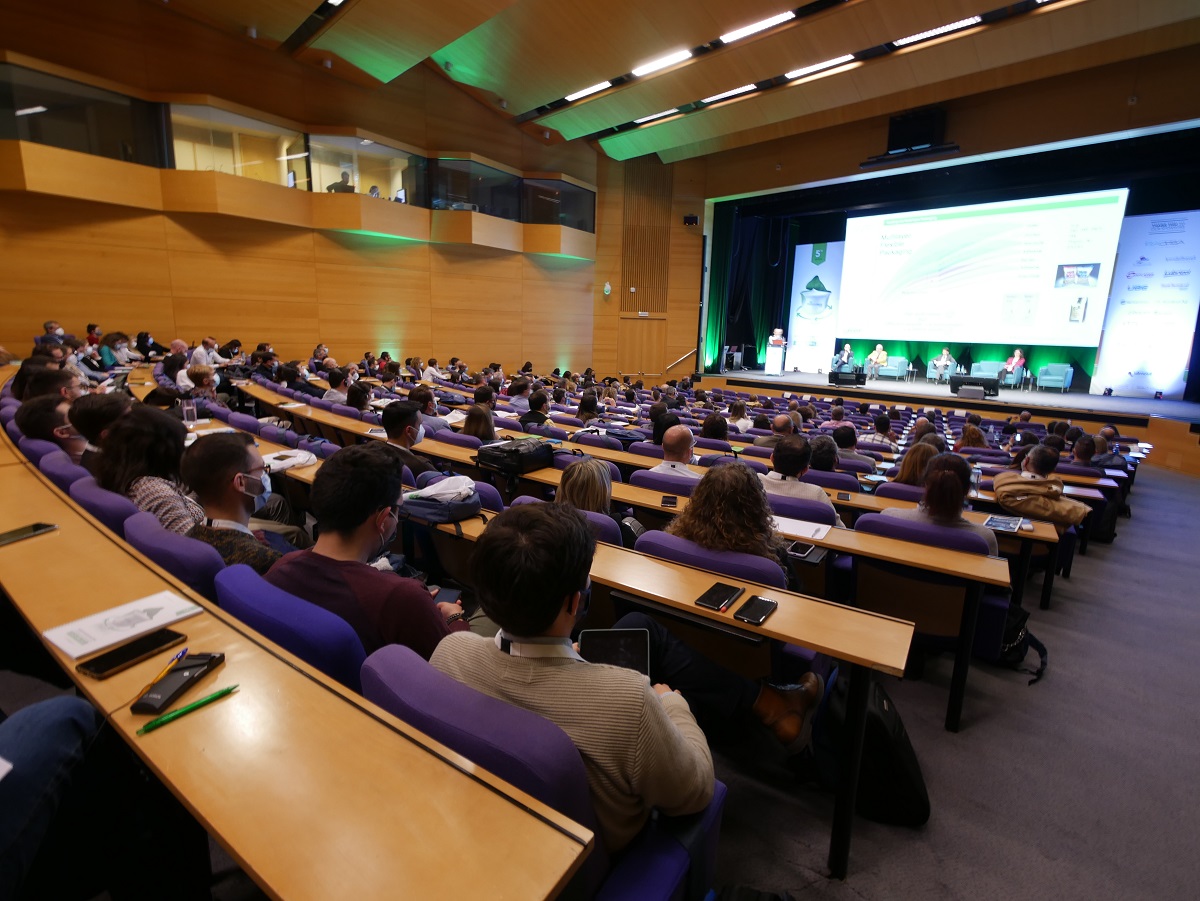MeetingPack 2022 food barrier-packaging conference opens in Valencia, Spain

MeetingPack 2022, the global conclave for the food barrier-packaging industry, opened April 20 at the Conference Center in Valencia, Spain, with more than 300 attendees representing the entire value chain who, throughout two days, will address all the challenges and opportunities that affect the sector through more than 30 presentations and several chances for networking.
The meeting began with a welcome from the organizers, José Antonio Costa, director of AIMPLAS, and Cristina del Campo, director of AINIA, who highlighted the importance of holding this fifth edition in such an emblematic location for an international congress as the Palacio de Congresos and advanced the MeetingPack value proposition through its seven sessions and the first call for the MP 2022 awards. Then, the Spanish Minister of Sustainable Economy, Productive Sectors, Commerce and Labor, Rafael Climent, opened the congress and gave way to Irene Mora, from Plastics Europe, who presented a global vision of the current legislative panorama that affects the packaging industry and presented the independent report "Reshaping Plastics," that emphasizes the need for a faster systemic change in the sector toward circularity and carbon neutrality.
The day continued with various presentations by specialists in the field such as Philippe van Damme, from Lyondellbasell, who showed how an alternative technology for sustainable rigid packaging is possible and addressed key aspects such as eco-design, chemical recycling, biomaterials and the innovative fluorination barrier, which makes it possible to obtain 100% recyclable mono-material containers with a high barrier. In the second session, Federico Faiella, from Novamont, explained the importance of listening to the industry to respond to its needs, such as the case of innovative biodegradable and compostable high-barrier materials obtained from renewable sources. Pere Coll, from Enplater, moderated the third session, stressing the importance of carrying out a life cycle analysis as the only way to validate the environmental sustainability of a product, beyond appearances or promises. Finally, in the fourth session, Mari Pau Balaguer, from Constantia, spoke about what the packaging of the future will look like in three axes: its end of life, which will be recyclable or compostable; its origin: that it will be bio-based or with a high content of recycled material and its perception, an area in which he has introduced the term "eco-feeling."
Innovations in barrier packaging
ITC, in collaboration with AIMPLAS, presented innovative high-barrier biodegradable capsules designed to resist sterilization processes and contain the food that is later going to be 3D-printed. This system, the result of the Tecfood project, is an example of environmentally sustainable barrier packaging that also prevents food waste by printing only the amount of food to be consumed while the rest can be kept cold.
For its part, AINIA will exhibit its Fibtray system, a paperboard container that reduces the use of plastic materials by between 85-90% and allows safer heat-sealing, with a completely flat sealing edge, without discontinuities, and of uniform thickness. This allows to ensure its tightness with a lower risk of defects in its online processing, thereby increasing food safety, a vital aspect for the food industry.